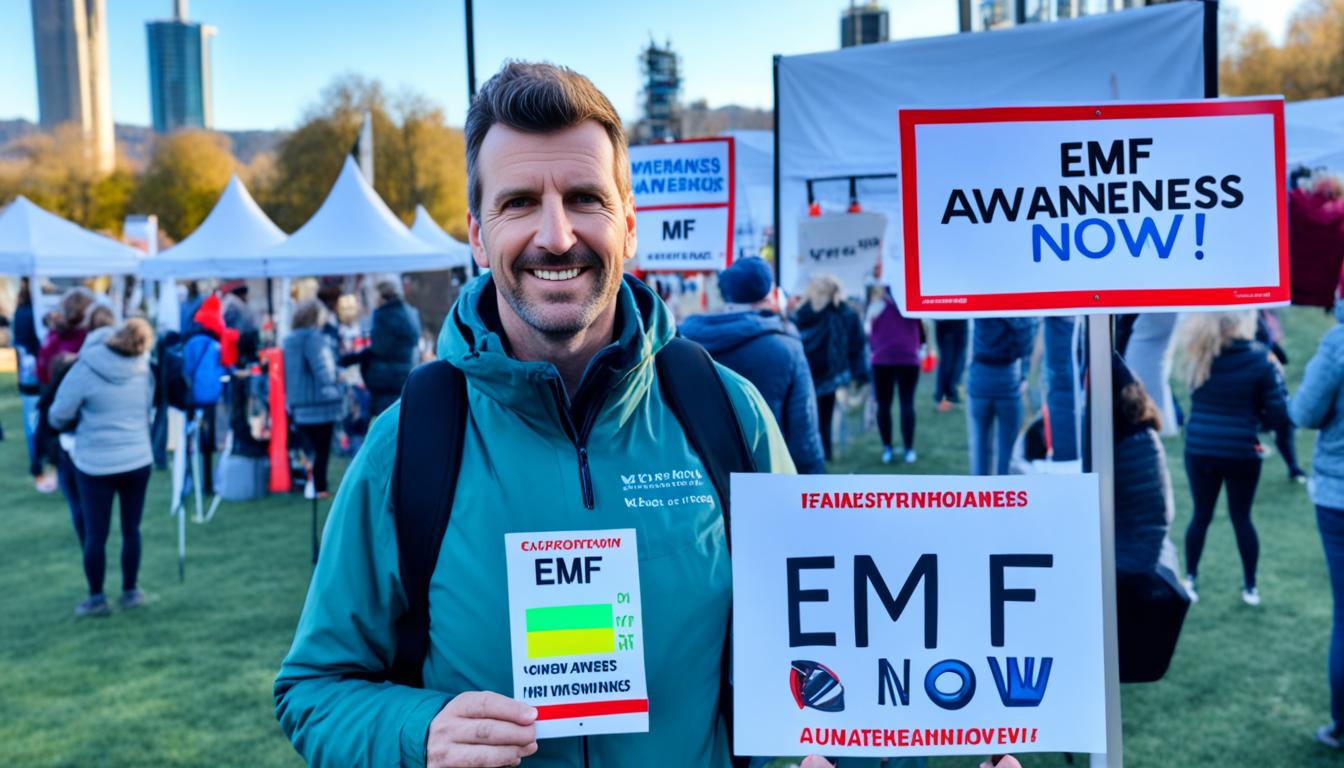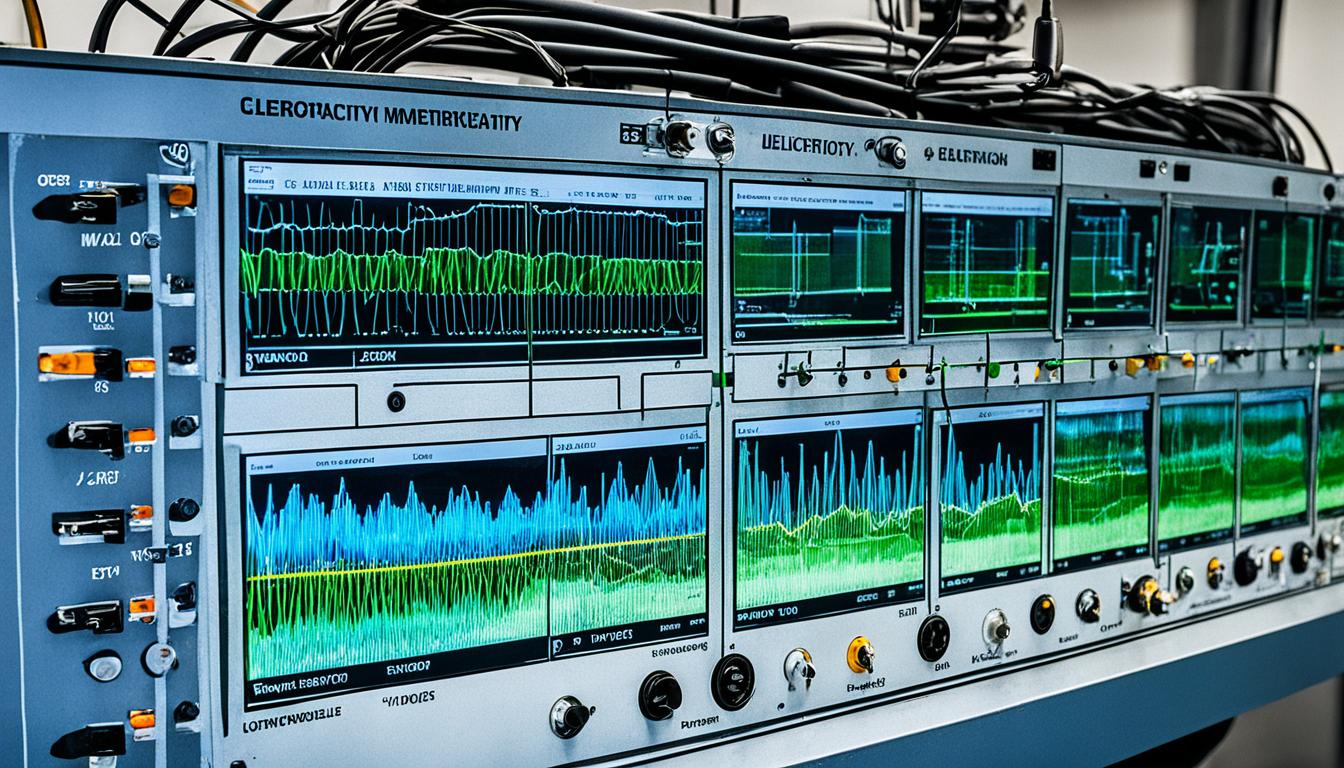Disclosure: This Post Contains Affiliate Links; We earn a commission on purchases.
Policymaker engagement is crucial for effective advocacy on EMF (electromagnetic fields) issues. By engaging with policymakers, advocates can influence public policy, raise awareness, and address concerns related to the potential adverse health effects of EMF exposure. To ensure successful engagement, advocates should follow strategic approaches and employ effective advocacy strategies. This article provides valuable tips and guidance for engaging policymakers and championing EMF concerns through effective advocacy.
Key Takeaways:
- Engaging with policymakers is essential for advocating on EMF issues
- Effective advocacy strategies can influence public policy
- Raising awareness about adverse health effects of EMF exposure is a key goal
- Strategic approaches are necessary for successful policymaker engagement
- Following effective advocacy strategies can make a positive impact on EMF policy and public health
Understanding the Roles of EMF Experts in Policy Advice
EMF experts play pivotal roles in providing policy advice on electromagnetic fields. Research suggests that there are different roles that experts assume when advising policymakers on complex issues such as EMF.
- Evaluating the adequacy of current EMF policies: Experts assess existing policies related to EMF and analyze their effectiveness in addressing potential health risks. They critically evaluate the scientific evidence and determine whether the policies adequately protect the public from EMF exposure.
- Advocating for precautionary measures: EMF experts advocate for the implementation of precautionary measures to mitigate potential risks associated with EMF exposure. They emphasize the importance of considering the potential long-term effects and encourage policymakers to prioritize public health and safety.
- Determining their position in relation to policymakers and other stakeholders: Experts navigate the dynamics between policymakers, industry representatives, and other stakeholders to provide unbiased and evidence-based recommendations. They consider various perspectives and stakeholder interests when formulating policy advice, ensuring a balanced and comprehensive approach.
The degree of uncertainty surrounding EMF issues significantly influences the roles of experts. As experts grapple with the complexities and evolving scientific understanding of EMF, their advice takes into account the levels of uncertainty and potential risks involved.
Understanding the various roles of EMF experts is essential for effective advocacy and policymaker engagement. It allows advocates to leverage the expertise of these professionals and shape policy discussions and decisions in a manner that prioritizes public health and safety.
The Adverse Health Effects of EMFs: A Matter of Debate and Uncertainty
The evidence surrounding the adverse health effects of electromagnetic fields (EMFs) at public exposure levels remains a subject of debate and uncertainty. While some studies suggest potential links between EMF exposure and health risks, others report insufficient or contradictory evidence. This raises questions about the true extent of the adverse health effects and the need for further research.
It is important to note that the International Agency for Research on Cancer (IARC) has classified EMFs as a possible carcinogen. However, it is essential to understand that this classification does not definitively establish a causal relationship between EMFs and cancer. The overall scientific consensus is that the evidence is inconclusive, highlighting the need for continued investigation and evaluation.
The uncertainty surrounding the adverse health effects of EMFs poses challenges when advocating for EMF concerns. While there may be legitimate concerns regarding potential harm, it is crucial to approach the issue with a balanced perspective that acknowledges both the existing evidence and the areas of uncertainty.
By acknowledging the current state of knowledge and openly discussing the uncertainties, advocates can appeal to policymakers and the public in a more informed and credible manner. This approach fosters constructive dialogue, encourages further research, and facilitates the development of evidence-based policies and guidelines.
Public Exposure and the Importance of Precautionary Measures
Public exposure to EMFs is a topic of significant concern due to its widespread nature. With the increasing use of mobile devices, wireless technologies, and power transmission systems, public exposure levels are on the rise. It is crucial to address this issue cautiously and implement appropriate precautionary measures, even in the presence of uncertainty.
“The debate surrounding the adverse health effects of EMFs should not overshadow the importance of taking precautionary measures to protect public health.”
While the evidence might be inconclusive, adopting precautionary measures can help mitigate potential risks and ensure the well-being of the population. These measures may include setting exposure limits, promoting safe practices in the use of electronic devices, and implementing EMF mitigation strategies in sensitive environments such as schools and hospitals.
Public safety should always be a priority, and appropriate actions should be taken based on the available evidence, the precautionary principle, and the ongoing scientific research on the subject.
The Need for Continued Research and Evidence-based Policies
To address the uncertainty surrounding the adverse health effects of EMFs, further research is necessary. It is crucial to invest in comprehensive studies that consider various factors, including exposure duration, intensity, and frequency, as well as individual susceptibility.
Robust research can help fill the gaps in our understanding, provide clearer insights into the potential health effects of EMFs, and guide the development of evidence-based policies and guidelines. Ongoing monitoring of EMF exposure and epidemiological studies can enhance our understanding of its long-term effects and inform decision-making processes.
Factors Influencing Expert Advice on EMF Policy
When it comes to EMF policy, expert advice plays a vital role in shaping decisions and regulations. However, it’s important to recognize that several factors can influence the advice provided by these experts. Understanding these factors can help advocates interpret and engage with expert recommendations effectively.
One key factor is the level of uncertainty surrounding EMF issues. As with any complex topic, there may be gaps in knowledge or differing interpretations of existing research. Experts must navigate this uncertainty when formulating their advice and recommendations.
The type of knowledge possessed by the expert also impacts their advice on EMF policy. Some experts may have a deep understanding of the underlying science and technical aspects of EMFs, while others may approach the topic from a more policy-oriented perspective. The diversity of expertise among these professionals can lead to varying viewpoints.
The core values held by experts can also shape their advice. Different individuals may prioritize different values, such as public health, technological advancement, or economic considerations. These values can influence the recommendations put forth by experts, reflecting their personal beliefs and perspectives.
The organization for which the expert works can also influence their advice on EMF policy. Some organizations may have specific agendas or priorities that align with certain viewpoints. It’s essential to consider the potential biases associated with an expert’s organizational affiliation.
Lastly, the societal context in which experts operate can have a significant impact on their advice. Public perception, media influence, and cultural factors can shape expert opinions and recommendations. Experts may consider these external factors when formulating their advice on EMF policy.
“The advice provided by experts on EMF policy is not solely based on scientific evidence but also influenced by personal values, organizational affiliations, and societal context. It’s crucial for advocates to be aware of these factors when engaging with experts and policymakers.”
By understanding the factors that influence expert advice on EMF policy, advocates can engage in more nuanced discussions and effectively address differing viewpoints. Recognizing the complexity of these influences is essential for fostering productive dialogue and promoting evidence-based decision-making.
| Factors Influencing Expert Advice on EMF Policy | Description |
|---|---|
| Level of Uncertainty | The degree of uncertainty surrounding EMF issues and the interpretation of available research. |
| Type of Knowledge | The specific expertise and background possessed by the expert, influencing their approach to EMF policy. |
| Core Values | The personal values and beliefs of the expert, shaping their recommendations on EMF policy. |
| Organizational Affiliation | The influence of the expert’s organization and its specific goals or priorities on their advice. |
| Societal Context | The broader social and cultural factors that can impact expert opinions and recommendations. |
Understanding these factors can contribute to more informed dialogue and collaboration between advocates, experts, and policymakers, ultimately leading to the development of balanced and effective EMF policies.

Effective Strategies for Engaging Policymakers on EMF Issues
When it comes to advocating for EMF (electromagnetic field) issues, engaging policymakers requires a strategic and effective approach. To have a meaningful impact on public policy and raise awareness about EMF concerns, advocates should consider the following strategies:
Foster Advocacy Campaigns with Grassroots Mobilization
An advocacy campaign that mobilizes grassroots support can be a powerful tool for bringing EMF issues to the forefront. By engaging individuals at the community level, advocates can create a groundswell of support, stimulating the attention and actions of policymakers. Grassroots mobilization empowers individuals to become active participants in advocating for EMF concerns, creating a collective voice that policymakers cannot ignore.
Build Alliances and Engage Stakeholders
Effective policymaker engagement requires building alliances and engaging stakeholders who share common interests or concerns. By collaborating with organizations, experts, and community groups that have a stake in EMF issues, advocates can strengthen their advocacy message. These alliances bring together diverse perspectives and expertise, providing a comprehensive and compelling case for addressing EMF concerns.
Focus on Clear and Accurate Messaging
A clear and accurate message is essential when engaging policymakers on EMF issues. Advocates should distill complex information into digestible and relatable messages that resonate with policymakers and the public. By presenting facts and evidence-based arguments in a concise and compelling manner, advocates can effectively convey the urgency and importance of addressing EMF concerns.
Employ Authoritative Spokespeople
Having authoritative and credible spokespeople can lend credibility and influence to advocacy efforts. Experts, scientists, and professionals in relevant fields can help advocate for EMF concerns by presenting well-grounded arguments, providing expert testimony, and offering objective analysis of scientific research. The credibility and expertise of these spokespeople can have a persuasive impact on policymakers’ understanding and decision-making processes.
Listen to Concerns and Feedback
Engaging policymakers is not only about conveying messages but also about actively listening to their concerns and feedback. Advocates should create opportunities for dialogue, allowing policymakers to express their perspectives, ask questions, and provide feedback. By actively listening and addressing their concerns, advocates can build rapport, foster trust, and potentially influence policymakers’ viewpoints on EMF issues.
Employ Multiple Communication Channels
Reaching a broader audience and maximizing impact requires employing multiple communication channels. Advocates can leverage various channels, such as media interviews, public forums, and online platforms, to disseminate information about EMF issues. By utilizing different channels, advocates can connect with policymakers and the public through diverse mediums, ensuring that their message reaches a wider audience and garners greater visibility.
To effectively engage policymakers on EMF issues, advocates must adopt these strategies and approaches. By fostering grassroots mobilization, building alliances, delivering clear messages, employing authoritative spokespeople, listening to concerns, and utilizing multiple communication channels, advocates can effectively champion EMF concerns and drive meaningful change.
Tailoring Communication and Engagement for Different EMF Issues
Effective communication and engagement are crucial when addressing various EMF issues and risk perceptions. To ensure impactful advocacy and policymaker engagement, it is essential to tailor communication strategies to the specific EMF issues at hand. This involves understanding the audience, considering local cultural nuances, and selecting appropriate communication methods.
Addressing Medical Exposures to EMFs
One significant EMF issue that requires tailored communication is medical exposures to electromagnetic fields. When addressing this issue, it is crucial to provide clear information on the benefits and risks of the medical procedure involving EMFs. The intended communication should aim to alleviate concerns, educate the public and policymakers about safety measures, and encourage dialogue with healthcare professionals.
“Medical exposures to EMFs require clear communication on the benefits and risks of the procedure, assuaging concerns, and engaging healthcare professionals in the dialogue.”
Engaging healthcare professionals in the conversation can help address any misconceptions or fears, as well as foster a better understanding of the importance of EMF safety measures in medical settings. By tailoring communication strategies to this specific EMF issue, advocates can effectively bridge the gap between scientific knowledge and the public perception of medical exposures to EMFs.
Other EMF issues, such as public exposure from power lines or wireless technologies, will require their own tailored communication approaches. These approaches may involve educating the public about the safety measures put in place, addressing common misconceptions, and showcasing reliable scientific evidence to help people make informed decisions.
Tailoring Communication Strategies for Different EMF Issues
| EMF Issue | Communication Strategies |
|---|---|
| Medical Exposures | Provide clear information on benefits and risks of the procedure, engage healthcare professionals, and address concerns. |
| Public Exposure from Power Lines | Educate the public on safety measures, address misconceptions, and provide scientific evidence. |
| Wireless Technologies | Inform the public about safety precautions, debunk myths, and emphasize reliable scientific research. |
By tailoring communication and engagement strategies, policymakers and the public can receive accurate and relevant information regarding EMF issues. Effective communication ensures that concerns are addressed, potential risks are understood, and the overall dialogue surrounding EMFs remains informed and proactive.
Image: Tailoring Communication and Engagement for Different EMF Issues
The Role of Radiation Protection Associations in Public Engagement
Radiation protection associations, also known as associate societies, play a crucial role in public engagement on EMF (electromagnetic fields) issues. As trusted sources of unbiased information, these associations can effectively engage with the public, provide scientific knowledge, and alleviate concerns.
They play a significant part in raising awareness and promoting understanding of the potential risks associated with EMF exposure.
These associations take proactive measures to educate the public through various means. They develop and implement educational programs that aim to inform individuals about the science behind EMFs and provide guidance on safe usage and measures for minimizing exposure.
Through collaboration with the media, radiation protection associations can disseminate accurate and balanced information to a broader audience. They work closely with journalists to ensure that the coverage of EMF issues is factual, supporting the goal of providing unbiased information to the public.
Additionally, these associations engage with government and political stakeholders to advocate for policies that prioritize public health and safety. They actively participate in the development of regulations and guidelines for EMF exposure limits and work to ensure that these standards are evidence-based and up-to-date.
Their expertise is instrumental in shaping public policy and fostering a responsible approach to EMF issues.
Liaising with other professional organizations is another essential aspect of their work. Collaboration allows for the exchange of knowledge, sharing of best practices, and coordination of efforts to address EMF concerns. Together, these associations amplify their influence and strengthen the advocacy efforts in the public engagement space.
Contributions of Radiation Protection Associations in Public Engagement
| Contributions | Description |
|---|---|
| Development of educational programs | Designing initiatives to inform the public about EMFs, their potential risks, and safety measures |
| Collaboration with the media | Working with journalists to ensure accurate and balanced reporting on EMF issues |
| Engagement with government and political stakeholders | Advocating for evidence-based policies and regulations that prioritize public health and safety |
| Liaison with professional organizations | Collaboration with other relevant associations to share knowledge and coordinate efforts |
Overall, the involvement of radiation protection associations enhances public engagement on EMF issues by providing unbiased information, shaping policy direction, and fostering cooperation between stakeholders. Their contributions are vital for empowering individuals to make informed decisions and promoting a safer environment in the face of a rapidly evolving technological landscape.

Conclusion
Effective advocacy is essential for engaging policymakers on electromagnetic field (EMF) issues and shaping public policy. By considering the roles of EMF experts, addressing uncertainty, and tailoring communication and engagement methods, advocates can make a significant impact.
Advocates should utilize the guidance provided in this article to champion EMF concerns and raise awareness about the potential health effects of EMF exposure. Policymaker engagement is crucial for promoting a safe and informed approach to EMF issues, and advocates should continue to stay informed and collaborate with relevant stakeholders.
By persisting in their advocacy efforts, advocates can influence public policy, drive changes in regulations, and contribute to the overall improvement of public health related to EMF exposure. Effective advocacy and policymaker engagement play a pivotal role in ensuring a balanced understanding of EMF issues and fostering the development of evidence-based policies.
Source Links
- https://www.ncbi.nlm.nih.gov/pmc/articles/PMC7379530/
- https://www.ncbi.nlm.nih.gov/pmc/articles/PMC4417251/
- https://www.irpa.net/members/IRPA Guidance Public Engagement.pdf

Subscribe to Our Newsletter










